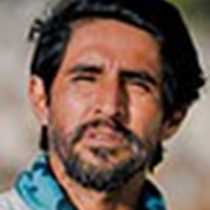Santa Cruz is a large island with about 15,000 people and an incredible environment. It is an obligatory stop for all tourists that come to visit this beautiful corner of the world. The Charles Darwin Station is based here and together with the Galapagos National Park is running conservation projects dedicated to the protection of the local unique resources.
We left our ship to go to a very special place in the town of Puerto Ayora, to get to know more about people, their culture and how they coexist with nature. One of the most prominent projects is the Giant Tortoise Breeding and Rearing Center that includes several island tortoise species with the intention of bringing numbers up from decline, due mainly to predation over the last two centuries.
A similar project includes another species of tortoise known as saddleback tortoises whose best representative is a male tortoise nicknamed “Super Diego.” After Lonesome George’s sad passing last year, Diego has become the center of attention. He once lived in the San Diego Zoo and had to be returned to Galapagos to join the only other survivors: twelve females and two males. Together they have procreated more than one thousand tortoises since the 1970s. Today many of them are back on their own islands and breeding on their own, as this was one of the most successful programs ever conducted by these institutions.
After this very interesting walk we headed back through town where we had the opportunity to do some shopping in the local galleries. We saw interesting handicrafts produced by the hands of very skilled people from different regions of Ecuador which have moved to live in the Galapagos to make it a multicultural place.
After this visit we traveled into the highlands by bus to reach a farm where we learned the fine elaboration of liquor, brown sugar and melaza out of sugar cane as well as the process of making coffee and other interesting things. We arrived to the restaurant in a variety of ways! Some wanted to jog while others rode bikes or took our bus. After enjoying a good meal we hopped back into the buses and continued our way to the giant tortoise reserve to meet these enigmatic creatures in their own natural state. It just couldn’t get any better, they were everywhere and all of us enjoyed their reluctance to us, they acted as if we just weren’t there.
Soon they will leave the highlands and move to lower elevations where they can find good soil to bury their eggs and good energy for the incubations which goes for some three to four months.
Another thing that attracted our attention was a formation called a lava tube. Its mysterious inside reveals its volcanic nature. We use flashlights to explore, which makes it even more exciting, and sometimes come across owls!
This has been another fantastic day in Galapagos.







